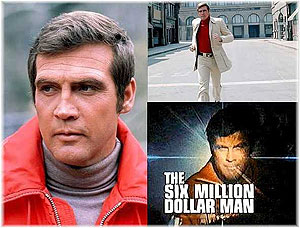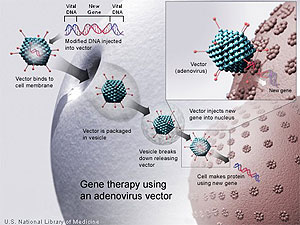 "We can rebuild him. We have the technology."
"We can rebuild him. We have the technology."
Remember that opening line from the Six Million Dollar Man? Soon we'll be able to genetically rebuild people. Or at least add some cool new features...
Let’s say we wanted to make an athlete stronger or able to run for a longer amount of time. One way we might do it is to add a certain version of the EPO receptor gene to build up his or her endurance. Or a certain version of the myostatin gene to make the athlete stronger.
How would we add these genes? Most likely with something called viral-mediated gene therapy. The first thing we'd need to do is find a virus that naturally inserts itself into DNA. There are lots of these around so that's pretty easy. Next we'd need to take out any viral genes that make the virus dangerous and replace them with the gene(s) we're interested in (EPO receptor and/or myostatin). Then we'd infect the athlete with the engineered virus and voila, a rebuilt athlete!
 Sounds simple enough. But of course, reality is much more complicated. Just sticking a gene into a virus won't work. We'd need to put something called a promoter in front of the gene(s). A promoter is a DNA sequence that tells a cell that a gene is here so please make a copy of it into RNA. (The RNA is then translated into a protein that does something like make extra red blood cells or bigger muscles.)
Sounds simple enough. But of course, reality is much more complicated. Just sticking a gene into a virus won't work. We'd need to put something called a promoter in front of the gene(s). A promoter is a DNA sequence that tells a cell that a gene is here so please make a copy of it into RNA. (The RNA is then translated into a protein that does something like make extra red blood cells or bigger muscles.)
